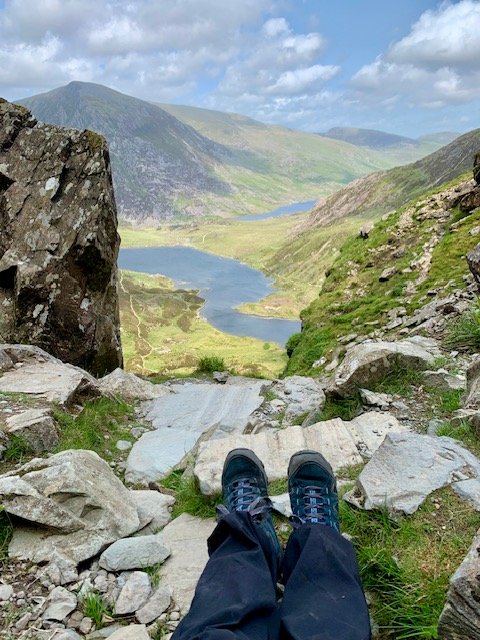In May 2025, Natur am Byth welcomed three new conservation trainees to assist with our ongoing work to safeguard Wales' most at risk species. Now two (and a bit!) months in, Lindsey Thomas, who works with Buglife on the Swansea Bay Coasts, Commons and Communities project, looks back on some recent work she's done for the programme:

As I stand at 800m elevation, at the top of a scree path near the summit of Cwm Idwal, I can’t help but reflect on how my life has changed in the last month. For the last six years I worked in a warehouse whilst studying for a degree with The Open University, and upon graduating I began the battle of trying to get a job in the highly competitive field of conservation.
Then one day, in my dreary warehouse job, I received an email. I had an interview! I attended and then, amazingly, I was offered the job! Which brings me to where I am now, standing atop a mountain, gazing out over the incredible landscape of Eryri national park in North Wales.
The view is staggering; below is the clear glistening lake of Llyn Idwal, to the left a sweeping glacial valley, and to the right the towering spires of even higher peaks. Getting to this elevation was a challenge, for me more so than my two fellow, more youthful, trainees and our expert guide from Plantlife. A challenge but worth it, not only for the incredible view but to see the rare species that live in this wild and brutal landscape.
Vast boulders scatter the slope, and each is capped with a crown of plants specialised for the composition of the rock they inhabit. Even the tiny, jagged ledges that dot the sheer cliffs are fringed with plants, including trees that stretch their spindly limbs above truly hair-raising drops.

Each of these patches of life form a unique community, largely disconnected from their surroundings, like sky islands in miniature. Countless rare plants survive in this environment, such as the prehistoric and bizarrely hairy Stag’s-horn clubmoss or the iconic and delicately beautiful Snowdon lily. Native carnivorous plants also dot the landscape, such as the deceptively attractive butterwort, which dangles eye-catching purple flowers over sticky leaves, and the glistening sundew that ensnares any insects that venture too close.
Cwm Idwal is also known for its collection of saxifrage, a family of flowering plants found in mountainous regions across the northern hemisphere, but some of the UK’s rarest species can only be found here in Eryri.
Another species that is nationally scarce but fairly abundant here is the tiny and charismatic Bilberry bumblebee, also known as the mountain bee, due to its preference for upland habitats. Growing to barely a centimetre in length it is a real treat to watch as it industriously moves from flower to flower.
I’ve learnt a lot on this trip, from the history of the landscape to the importance of grazing for biodiversity, and the resilience of nature. I have also learnt that in order for threatened species to recover and thrive they need our help, a mission statement for Natur am Byth! and an undertaking that I am privileged to be a part of. Soon I will be travelling back to my home patch in South Wales, and I can’t wait to see what exciting discoveries lie just around the corner.